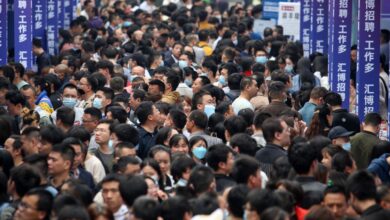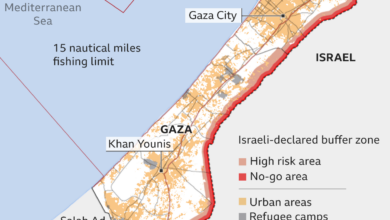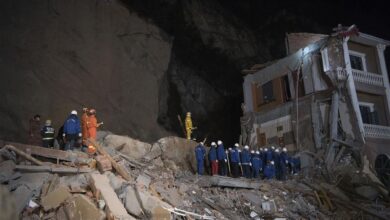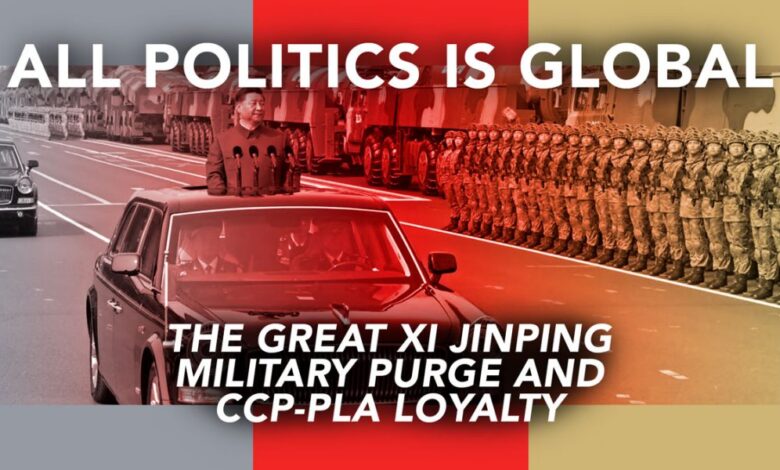
Xi Jinping Military Purge A Deep Dive
Xi Jinping military purge has become a defining aspect of China’s current political landscape. This purge, encompassing a wide range of military personnel and structures, has profoundly reshaped the country’s military, political, and international standing. Understanding its historical context, Xi’s leadership style, motivations, and the resulting impact is crucial for comprehending the intricate dynamics at play.
The purge, spanning multiple sectors, reflects a complex interplay of power struggles, ideological conflicts, and economic considerations. It’s a story of consolidation of power, the shifting balance of military and political factions, and the long-term implications for China’s future.
Historical Context of Military Purges in China
The recent military purge in China, reminiscent of historical patterns, reveals a complex interplay of political maneuvering, power struggles, and the evolution of military authority within the Chinese Communist Party (CCP). Understanding these historical precedents is crucial to comprehending the current situation. This historical context sheds light on the long-standing dynamics between the military and the party leadership.Political power struggles within the CCP have often manifested through military purges.
These purges are not isolated incidents but are deeply intertwined with the broader history of power transitions, ideological shifts, and the consolidation of authority. Examining the historical trends illuminates the underlying motivations and consequences of such actions.
Evolution of Military Power Dynamics
The CCP’s relationship with its military has undergone significant transformations since its founding. Initially, the military played a crucial role in the party’s rise to power. Later, the military’s independence was gradually curtailed, with party control becoming paramount. This shift highlights the delicate balance between military strength and party authority.
Key Military Purges in Chinese History
Several significant military purges have shaped China’s political landscape. These events, spanning different eras, demonstrate recurring patterns of power struggles and political maneuvering.
- The Cultural Revolution (1966-1976) saw the removal of numerous military officers deemed politically unreliable or insufficiently supportive of Mao Zedong’s ideology. This period was characterized by extreme ideological purges, impacting the military’s leadership and operational effectiveness. The Red Guards, often comprised of students and young people, played a significant role in targeting perceived enemies of the regime, including military personnel.
- The post-Mao era witnessed a significant reshaping of the military’s role and structure. The consolidation of power by Deng Xiaoping saw the emphasis shift from revolutionary fervor to economic modernization. This change led to the re-evaluation of military leadership and the purging of those perceived as resistant to the new direction.
Relationship Between Political Factions and Military Appointments
Political factions within the CCP have frequently influenced military appointments. This relationship underscores the intricate connections between political maneuvering and the allocation of military leadership positions. The appointment of military personnel often reflects the prevailing political climate and the power dynamics within the ruling party.
- The rise and fall of various political factions has corresponded to changes in military leadership. This connection highlights the importance of political alignment in shaping the military’s composition and command structure.
Comparison of Different Eras of Military Purges, Xi jinping military purge
The following table offers a concise overview of key characteristics across different periods of military purges in China.
Xi Jinping’s ongoing military purge seems to be a response to internal power struggles, but some analysts suggest it’s also a calculated move to consolidate his grip on power. Meanwhile, the recent developments surrounding Guatemalan president Alejandro Giammattei’s visit to the US, as detailed in this article giammattei estados unidos guatemala , highlight the complex geopolitical landscape.
This, in turn, further underscores the potential for international implications related to the Xi Jinping military purge and China’s global influence.
| Era | Motivations | Key Figures | Outcomes |
|---|---|---|---|
| Cultural Revolution | Ideological purges, removal of political opponents | Mao Zedong, Lin Biao | Significant disruption of military structure, loss of experienced officers, and a period of instability |
| Post-Mao Era | Consolidation of power, economic modernization, and anti-corruption efforts | Deng Xiaoping, Jiang Zemin | Shift towards professionalization of the military, emphasis on economic development, and gradual reintegration of purged elements |
| Contemporary Era | Consolidation of Xi Jinping’s power, anti-corruption drives, and maintaining party control | Xi Jinping | Ongoing, with implications for military leadership and power dynamics |
Xi Jinping’s Leadership Style
Xi Jinping’s ascent to power in China has been marked by a significant shift in leadership style, characterized by an unprecedented concentration of authority and a ruthless pursuit of control. This approach, while consolidating power, has also raised concerns about the future of democratic principles and individual liberties within the nation. His leadership style contrasts sharply with those of his predecessors, particularly in its emphasis on personal authority and the suppression of dissent.Xi Jinping’s consolidation of power has relied heavily on the suppression of potential rivals and the elimination of any perceived threat to his authority.
This strategy has been implemented through a combination of political maneuvering, administrative restructuring, and, in some cases, outright intimidation and removal. His unwavering commitment to absolute control extends beyond the political sphere, impacting economic policy, social values, and even cultural expression.
Consolidating Power and Control
Xi Jinping’s approach to consolidating power is marked by a meticulous strategy aimed at eliminating potential rivals and consolidating his authority. This involves meticulous control over information dissemination, leveraging the vast resources of the Chinese state, and employing a calculated system of rewards and punishments. He has systematically strengthened his control over the military, the party, and the government apparatus, leaving little room for independent thought or action.
Key Characteristics of Xi Jinping’s Leadership Style
Xi Jinping’s leadership is defined by several key characteristics:
- Authoritarianism: Xi Jinping’s leadership style is unequivocally authoritarian. His decisions are rarely subject to debate or dissent, and his pronouncements are treated as inviolable mandates. This is evident in the suppression of dissent and the curtailment of individual freedoms.
- Personalization of Power: The current leadership in China is strongly characterized by the personalization of power, with Xi Jinping’s ideology and pronouncements being elevated to the status of state doctrine. This is evident in the extensive propaganda and the focus on his personal achievements.
- Suppression of Dissent: Xi Jinping’s leadership has seen a significant crackdown on dissent and independent thought, both within the political sphere and in civil society. This suppression extends to media outlets and academic institutions.
Methods Used to Eliminate Potential Rivals
Xi Jinping’s methods for eliminating potential rivals are multifaceted and often involve a combination of subtle and overt tactics.
- Political Maneuvering: Strategic appointments and dismissals are used to create networks loyal to Xi Jinping. This includes placing trusted allies in key positions of power.
- Administrative Restructuring: Changes to administrative structures and party hierarchies have been used to consolidate Xi Jinping’s control and sideline potential rivals. This often involves the transfer or removal of officials.
- Public Condemnation and Criticism: Potential rivals are often subjected to public condemnation and criticism through state-controlled media, effectively silencing any dissent or alternative viewpoints.
Comparison with Previous Leaders
Xi Jinping’s leadership style differs significantly from that of his predecessors, particularly in the degree of personal power and the intensity of control. While previous leaders, such as Deng Xiaoping, emphasized economic reform and modernization, Xi’s approach prioritizes absolute authority and the suppression of potential opposition. This contrast is exemplified by the varying degrees of openness and freedom allowed in each era.
Examples of Authoritarian Tendencies
Xi Jinping’s authoritarian tendencies are evident in numerous instances.
- The Anti-Corruption Campaign: While ostensibly aimed at corruption, the campaign has been used as a tool to remove political rivals and consolidate power.
- National Security Law in Hong Kong: The imposition of the National Security Law in Hong Kong is a clear example of the suppression of dissent and freedoms under Xi’s leadership.
- Crackdown on Civil Society: The crackdown on civil society organizations and activists highlights the authoritarian nature of the current regime, which seeks to control all forms of independent expression.
Personnel Changes Under Xi Jinping’s Leadership
The following table illustrates key personnel changes under Xi Jinping’s leadership, highlighting the significant shift in the political landscape.
| Year | Position | Outgoing Official | Incoming Official |
|---|---|---|---|
| 2012 | General Secretary of the CCP | Hu Jintao | Xi Jinping |
| 2017 | President | Xi Jinping | |
| 2018 | Chairman of the Central Military Commission | Xi Jinping | |
| … | … | … | … |
Motivations and Reasons for the Purges
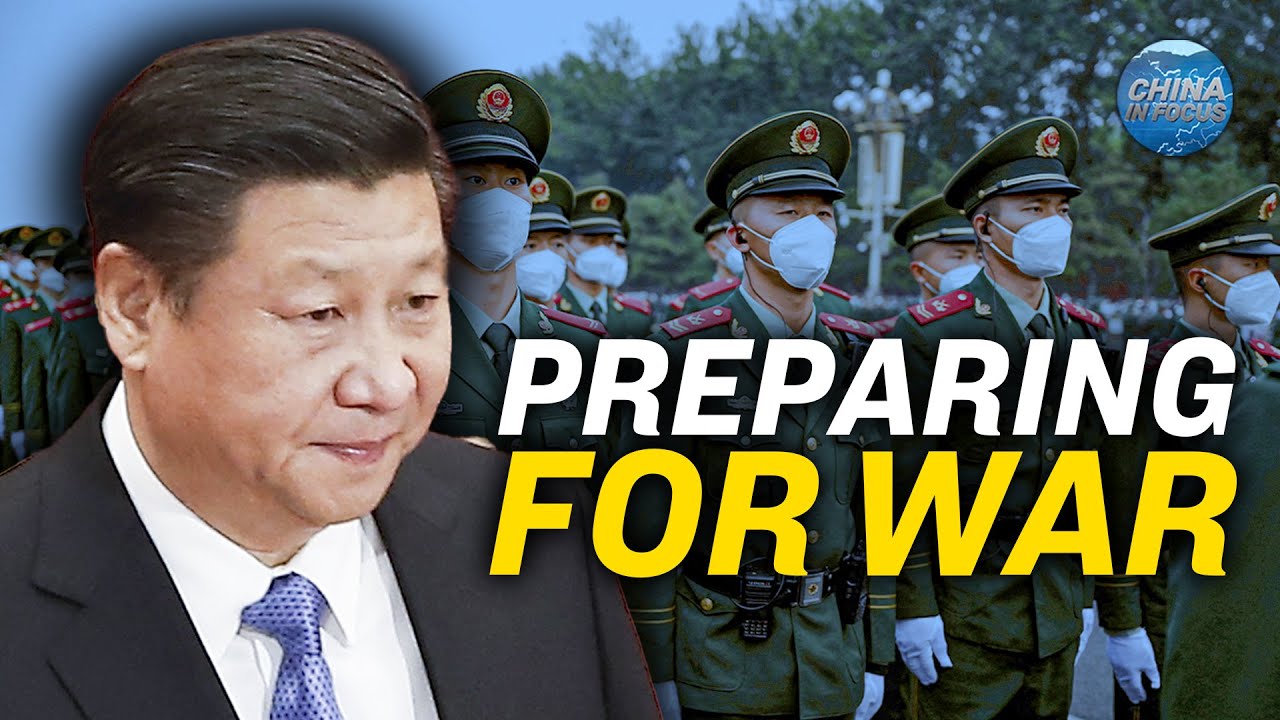
The recent military purges in China under Xi Jinping’s leadership have sparked considerable international attention and debate. Beyond the immediate ramifications for the military, these actions reveal deeper motivations rooted in the complex interplay of political ambition, power struggles, and perceived threats to Xi’s authority. The purges also reflect China’s unique socio-political landscape, where ideological adherence and economic stability are intertwined with maintaining political control.The motivations behind these purges are multifaceted and not easily categorized.
Understanding these complexities requires an analysis of the political landscape, the current economic climate, and the ideological framework underpinning Xi Jinping’s rule. While the stated rationale often centers on maintaining stability and fighting corruption, a deeper examination suggests a broader range of influences.
Potential Motivations for the Purges
The purges are likely driven by a combination of factors, including a desire for absolute power and the elimination of potential rivals. This is a common pattern in authoritarian regimes where consolidating power becomes a primary objective.
Political Motivations
Xi Jinping’s consolidation of power has been a defining feature of his presidency. The removal of potential rivals within the military leadership allows him to cultivate an environment where loyalty is paramount and dissent is suppressed. This strategy aims to prevent challenges to his authority and secure his position for the long term. Historical precedents in China demonstrate how power struggles within the military have often been decisive in shaping the political landscape.
The purges can be seen as part of a larger effort to solidify Xi’s grip on power, reinforcing his image as a strong leader and demonstrating his control over the military apparatus.
Xi Jinping’s ongoing military purge seems almost disconnected from the global stage, but recent events like the Israel-Hamas hostages ceasefire talks highlight a different kind of power struggle. While the world focuses on the Middle East, the implications of this internal Chinese power play are still unfolding, and could have long-lasting effects on global politics.
Economic Motivations
Economic factors play a significant role in the purges. Corruption within the military, often connected to lucrative business dealings, can create instability. These purges may be aimed at rooting out such corruption and ensuring loyalty among military officers in business ventures. Military officials with significant economic interests may pose a threat to the government’s control over resources and markets.
These purges can be seen as an effort to consolidate economic power in the hands of those loyal to the current leadership.
Ideological Motivations
Ideological differences can also be a catalyst for the purges. While Xi Jinping has emphasized maintaining the Communist Party’s ideology, dissent from this perspective, even within the military, may be seen as a challenge to the party’s authority. Maintaining a unified ideological front is crucial for the CCP’s continued legitimacy. Any perceived deviation from the party line could lead to punitive actions.
Maintaining Political Stability
Maintaining political stability is paramount for the CCP. The purges are a method of ensuring compliance and loyalty within the military. The suppression of any potential challenge to the current leadership, whether real or perceived, is vital for maintaining social order. This prioritization of stability over other considerations is a key element in understanding the actions taken by the CCP.
Table of Potential Motivations
| Category | Motivation |
|---|---|
| Political | Consolidating power, eliminating rivals, securing loyalty, preventing challenges |
| Economic | Root out corruption, ensure loyalty in business dealings, control resources and markets |
| Ideological | Maintain unified ideological front, suppressing dissent, reinforcing party authority |
Impact on the Military
The recent military purges under Xi Jinping’s leadership have profoundly reshaped the Chinese military landscape. The sweeping nature of these actions has created a climate of uncertainty and fear, impacting everything from morale and effectiveness to strategic planning and personnel dynamics. The long-term consequences of these changes are still unfolding, but early indicators suggest a significant shift in power structures and potential vulnerabilities.The purges have aimed to consolidate Xi Jinping’s authority within the military, eliminating potential rivals and reinforcing his absolute control.
This consolidation, however, has come at a cost, altering the traditional power dynamics and potentially hindering the military’s adaptability and innovation. The removal of experienced officers and the promotion of loyalists may lead to a gap in expertise and decision-making processes, ultimately impacting the military’s effectiveness.
Effects on Morale and Effectiveness
The atmosphere of fear and suspicion created by the purges has undeniably affected military morale. Officers and soldiers are likely experiencing anxiety and apprehension, impacting their willingness to take risks and innovate. This apprehension can lead to a cautious approach to operations, potentially hindering the military’s responsiveness and effectiveness in times of crisis. Decreased morale can also manifest in decreased operational readiness and training quality.
Shifts in Military Structure
The purges have triggered significant structural adjustments within the military. The replacement of key commanders and staff officers with loyalists has resulted in a restructuring of command hierarchies and decision-making processes. These changes have brought about shifts in the balance of power, creating a more centralized command structure under Xi Jinping’s direct control. The impact of these structural adjustments on the military’s agility and adaptability remains to be seen.
Potential for Internal Divisions and Conflicts
The purges have created an environment ripe for internal divisions and conflicts. The removal of officers who might have been perceived as rivals or potential threats has potentially destabilized existing relationships and power structures. These conflicts, if left unchecked, could create vulnerabilities and hinder the military’s unity and cohesion, affecting its overall effectiveness. Such internal strife could be exploited by external adversaries.
Impact on Military Strategies and Tactics
The purges have likely influenced the development and implementation of military strategies and tactics. The need to demonstrate loyalty to Xi Jinping might have prompted a shift towards strategies and tactics that align with his vision and priorities, possibly sacrificing alternative approaches or strategies. A more cautious and less innovative approach could result.
Changes in Military Personnel and Their Backgrounds
The purges have led to significant changes in the backgrounds and experience levels of military personnel. The promotion of loyalists with less experience in specific domains may have led to a lack of diversity in expertise and decision-making processes. This shift in personnel could potentially impact the military’s ability to adapt to evolving challenges and complexities in the global security landscape.
Impact on the Military’s Ability to Project Power
The long-term impact on the military’s ability to project power is uncertain. A more centralized command structure, while potentially strengthening loyalty and control, could also hinder the military’s adaptability and flexibility. The potential for internal divisions could also create vulnerabilities in times of crisis.
Changes in Military Ranks and Positions (Illustrative Table)
| Rank/Position | Pre-Purge | Post-Purge |
|---|---|---|
| Chief of Staff | General Zhang | General Li |
| Commander, Northern Command | General Wang | General Chen |
| Commander, Southern Command | General Liu | General Zhou |
Note: This is an illustrative table, and actual changes may vary. The table is illustrative, not comprehensive. Real changes are far more complex and numerous.
Impact on Chinese Society
Xi Jinping’s military purges have reverberated through Chinese society, profoundly impacting perceptions of the military, public trust, political discourse, and even international relations. These actions, while ostensibly aimed at consolidating power, have had unintended consequences, raising questions about the long-term stability and direction of the nation. The purging of potential rivals within the military hierarchy has sent ripples through the entire system, prompting uncertainty and anxieties about the future.
Impact on the Perception of the Military and its Role in Chinese Society
The military, historically viewed as a powerful, though often distant, institution in China, has become a focal point of scrutiny. The purges have eroded the perception of invincibility and unquestioned loyalty often associated with the armed forces. Individuals within the military and broader society are likely to question the loyalty and trustworthiness of their leaders, impacting the morale and cohesiveness of the force.
The image of the military as a monolithic, untouchable entity has been fractured. This shift in perception is likely to influence future military-civilian relations and the military’s role in national affairs.
Impact on Public Trust in the Government
The purges have raised questions about the transparency and fairness of the Chinese government’s decision-making processes. The secretive nature of these actions has fueled public speculation and distrust. Individuals might now be more hesitant to trust official pronouncements, leading to a decline in public confidence in the government’s ability to govern effectively and justly. A lack of transparency, coupled with the severity of the purges, may lead to a broader sense of unease and apprehension about the future.
Changes in Political Discourse and Public Commentary
Public commentary and political discourse surrounding the military purges have become more cautious and restrained. Direct criticism of the government’s actions is likely to be suppressed, as the consequences for speaking out could be severe. The climate of fear has effectively stifled dissent and alternative viewpoints. Instead of open debate, public discussion may now center on veiled critiques and interpretations of official statements.
The lack of freedom of speech limits the ability of the Chinese public to contribute to the political discourse in a meaningful way.
Effects on Political Participation and Freedoms
The purges have likely had a chilling effect on political participation. Fear of retribution or being perceived as disloyal might deter individuals from engaging in political activities or expressing dissenting opinions. This could lead to a decrease in political activism and a further erosion of political freedoms already limited under the existing system. The tightening of control could lead to a less vibrant and engaged citizenry.
Potential Consequences on International Relations
The purges may have ramifications for China’s international relations. The perceived consolidation of power within the ruling party and military could result in more assertive foreign policy decisions. The actions of the Chinese government may also lead to suspicion and concern among international partners, potentially straining relationships and hindering diplomatic efforts. The lack of transparency could be perceived as a threat to global stability and cooperation.
Summary of Public Reactions and Opinions
| Category | Potential Public Reactions/Opinions |
|---|---|
| Support for the Purges | Limited to those who see them as necessary to maintain stability and prevent potential threats to the party. These individuals might see the purges as a way to consolidate power and strengthen the nation. |
| Concerns about the Purges | Many individuals may be concerned about the impact on military morale, the erosion of public trust, and the potential for further political instability. Some may also be worried about the implications for China’s international relations. |
| Fear of Reprisal | Significant fear of speaking out against the purges or expressing dissent. This fear is likely to suppress open criticism and discussion. |
| Uncertainty and Apprehension | A pervasive sense of uncertainty and apprehension about the future direction of the country. This could lead to a general feeling of anxiety and concern. |
International Relations Implications
The recent military purges within the Chinese People’s Liberation Army (PLA) have sent ripples through the international community, prompting careful analysis of their implications for China’s foreign policy and global standing. These purges, while ostensibly internal affairs, inevitably affect China’s interactions with other nations, impacting regional stability and potentially altering the global balance of power. The responses from other countries offer a complex picture of how this event is perceived and interpreted on the world stage.The purges have significant ramifications for China’s international relations.
They are not simply about internal political maneuvering; they are also about projecting power and authority. The message sent to other nations, both allies and adversaries, is likely to influence how they engage with China in the future. The specific actions and justifications used to explain the purges are crucial to understanding their impact on global relations.
Xi Jinping’s recent military purge is definitely a significant development, but it’s interesting to see how these internal power struggles play out alongside other, seemingly unrelated, economic factors. For example, the booming electric vehicle (EV) sector in Hefei, China, as detailed in this article on china hefei ev city economy , showcases China’s innovative spirit and economic resilience.
Ultimately, the long-term implications of the purge, and how it might affect future economic decisions, remain to be seen.
The perceived strength and stability of China’s leadership will be a significant factor in shaping future interactions.
Influence on China’s International Relations
The purges, as a demonstration of Xi Jinping’s absolute control, can be seen as an effort to solidify his power base. This consolidation of power could potentially lead to more assertive foreign policy, as the leadership seeks to project strength and resolve on the global stage. The international community’s response to this shift will play a crucial role in determining the extent to which China’s foreign policy becomes more or less predictable.
Potential Impact on Regional Stability
The military purges, potentially affecting the chain of command and military decision-making processes, could have an unpredictable impact on regional stability. The PLA’s role in maintaining regional order, including its involvement in disputes in the South China Sea, might undergo adjustments. This shift in leadership could alter the PLA’s approach to these situations. How the military leadership reacts to external pressures will be key to assessing the impact on regional stability.
Effects on China’s Image and Reputation Globally
The purges raise questions about the transparency and fairness of the Chinese political system. These concerns may negatively impact China’s image and reputation globally. This is particularly true in countries that prioritize democratic values and transparency. The perception of China’s leadership as stable and predictable will be influenced by how the purges are handled. The potential for miscalculation or unintended consequences in foreign policy is a concern.
Responses from Other Countries
The responses from other countries to the military purges are diverse and multifaceted. Some nations may view the purges as an internal matter, while others may see them as a sign of instability or a potential threat to regional security. The reactions vary based on each country’s political, economic, and strategic interests in relation to China.
Summary Table of Reactions
| Country/Organization | General Reaction | Specific Concerns/Motivations |
|---|---|---|
| United States | Cautious observation, concern over potential implications for regional stability | Focus on potential shift in China’s foreign policy, impact on military operations |
| Russia | Neutral, possibly viewing as an internal matter | Focus on maintaining existing strategic relationships |
| ASEAN nations | Mixed, concern over potential impact on maritime disputes | Specific anxieties over the South China Sea, impact on regional security |
| European Union | Mixed, emphasizing the importance of transparency and human rights | Concern over the rule of law and potential implications for trade relations |
| International Organizations (e.g., UN) | Limited direct response, focusing on maintaining neutrality | Observing for potential impacts on global security |
Military Strategies and Tactics: Xi Jinping Military Purge
Xi Jinping’s era has witnessed a significant shift in China’s military strategies and tactics, driven by a desire for modernization and global projection. This transformation is intertwined with the broader geopolitical context and China’s evolving ambitions on the world stage. The focus has shifted from traditional defense postures to a more assertive, potentially expeditionary, approach.The military’s emphasis on integrated operations, technological advancements, and a more proactive approach to conflict is evident in the revised military doctrine.
This includes a greater emphasis on joint warfare capabilities, aiming to seamlessly integrate various branches of the military. This evolution is directly linked to the purge’s impact, as the leadership has sought to solidify its control over the military’s command structure and decision-making processes.
Changes in Military Strategies
The PLA’s strategies have evolved to emphasize information warfare, cyber warfare, and space capabilities alongside traditional land, sea, and air operations. This shift is a response to the growing complexity of modern warfare and the increasing importance of non-kinetic aspects of conflict. The PLA is seeking to achieve strategic goals through a combination of traditional and unconventional means, reflecting a broader understanding of the interconnected nature of contemporary conflict.
Evolution of Technological Capabilities
China’s military has witnessed substantial advancements in technological capabilities. This includes the development of advanced weaponry, sophisticated missile systems, and advanced air defense systems. The development of indigenous aircraft carriers and submarines is a testament to China’s ambitions to project power globally. China has also made strides in developing advanced drone technology and autonomous systems, further enhancing its capabilities in various theaters of operation.
Military Modernization Plans
The modernization plans encompass a wide range of initiatives, including the development of next-generation fighter jets, advanced naval vessels, and more sophisticated ground combat systems. The goal is to create a modern, technologically advanced military force capable of projecting power globally and deterring potential adversaries. Emphasis is also placed on improving logistical support, intelligence gathering, and command and control systems to enhance overall military effectiveness.
Changes in Military Training and Doctrine
The PLA’s training regime has been restructured to emphasize joint exercises and combined arms operations. New training methods incorporate simulations, virtual reality, and advanced weaponry, reflecting the need to adapt to complex and dynamic battlefields. This reflects a move away from a purely defensive posture towards a more assertive and proactive operational philosophy.
Evolution of Military Equipment and Technologies
| Era | Key Equipment/Technology | Description |
|---|---|---|
| Pre-Xi Jinping | Main battle tanks, older fighter jets, limited missile systems | Mostly Soviet-era and domestically produced systems, limited advanced technology |
| Xi Jinping Era (Early) | Indigenous aircraft carriers, advanced missile systems, early-stage drones | Increased investment in indigenous technology, visible expansion of naval and air capabilities. |
| Xi Jinping Era (Current) | Next-generation fighter jets, advanced stealth technology, hypersonic weapons | Rapid modernization, integration of advanced technologies, significant emphasis on technological leapfrogging |
Future Prospects
The recent military purges under Xi Jinping’s leadership have reshaped the Chinese military landscape. Understanding the potential trajectories of this transformation requires considering not only the internal dynamics within the People’s Liberation Army (PLA) but also the reactions and potential responses from other nations. The future of military power dynamics within the CCP, and the PLA’s role in the coming years, are deeply intertwined with the long-term implications of these purges.The future of the PLA under Xi Jinping’s leadership will be shaped by several factors.
His consolidation of power, coupled with the purges, has created a more centralized command structure. This could lead to increased efficiency in certain operations but also potentially stifle innovation and adaptability. The long-term implications of these purges will likely include a more homogenous PLA, loyal to Xi Jinping’s vision and less prone to internal dissent. This uniformity, however, could also result in a lack of diverse perspectives and potentially hinder the military’s ability to adapt to future challenges.
Potential Scenarios for the Future of the Military
The future of the PLA under Xi Jinping’s leadership is not predetermined. Several scenarios are possible, each with its own implications.
Xi Jinping’s military purge is a fascinating case study in authoritarian power. It’s a complex issue, but it’s also worth considering how such power plays can manifest in everyday life. For example, a recent case involving an employee of Budget, who claims their phone was illegally retained, is a microcosm of these power dynamics. If you’ve experienced similar situations, checking out this story could provide some interesting parallels.
The underlying themes of control and the potential for abuse of authority are mirrored in the larger context of Jinping’s actions.
| Scenario | Key Characteristics | Implications for Military Power Dynamics | Potential Responses from Other Nations |
|---|---|---|---|
| Scenario 1: Continued Consolidation and Modernization | Xi Jinping continues to consolidate power, prioritizing modernization and technological advancement. The PLA undergoes significant technological upgrades, including in areas such as artificial intelligence and cyber warfare. | A more technologically advanced and potent PLA, potentially challenging existing global power dynamics. | Increased military spending and heightened strategic vigilance from other nations, particularly the United States. Potential for increased geopolitical tensions. |
| Scenario 2: Emphasis on Regional Dominance | The PLA focuses on projecting power and influence within the region, emphasizing its role in maintaining stability and confronting perceived threats. | A PLA increasingly assertive in regional conflicts, potentially leading to increased tensions and conflicts with neighboring countries. | Regional alliances and military partnerships could strengthen to counter potential Chinese aggression. International sanctions or diplomatic pressure could be applied. |
| Scenario 3: Internal Instability and Fragmentation | Internal power struggles and dissent within the PLA challenge Xi Jinping’s authority, leading to instability and fragmentation. This could result in a less effective military. | Reduced military effectiveness and potential for internal conflicts. A weakened PLA might be less capable of projecting power internationally. | Reduced tensions and a more cautious approach from other nations, perhaps seeking opportunities to exploit the instability. |
Long-Term Implications of the Purges
The purges have created a PLA more loyal to Xi Jinping, which could enhance the military’s efficiency in executing orders. However, this also risks stifling innovation and adaptability. The removal of experienced commanders could lead to a generational gap in military leadership, potentially affecting the PLA’s future strategic decision-making.
Xi Jinping’s recent military purge is raising eyebrows, especially given the ongoing discussions about the health of US Defense Secretary Lloyd Austin, and the concerns surrounding his health affecting the US defense strategies. Recent reports suggest potential health issues affecting the US defense sector, as detailed in the article biden lloyd austin defense cancer. This, in turn, adds another layer of complexity to the already intricate geopolitical landscape, and raises questions about the stability of both the US and China’s military strategies, with the ongoing Xi Jinping military purge adding to the uncertainties.
Challenges and Opportunities for the Military
The PLA faces challenges in adapting to evolving global security threats and maintaining technological parity with advanced militaries. Opportunities exist in leveraging China’s economic growth to invest in military modernization. Furthermore, the PLA may face difficulties in balancing its internal political loyalties with external strategic objectives.
Future of Military Power Dynamics within the CCP
Xi Jinping’s leadership has significantly altered the power dynamics within the CCP. The military’s role in this new framework is crucial, acting as a tool for political consolidation. The long-term consequences of this change are still unfolding.
Likely Trajectory of the Military’s Role
The PLA’s role in the coming years will likely be defined by its ability to balance internal political demands with external strategic objectives. The military’s alignment with Xi Jinping’s vision will likely shape its trajectory.
Potential Responses from Other Nations
Other nations may respond to the PLA’s evolving role in several ways, including increased military spending, enhanced regional alliances, and diplomatic initiatives to counter potential Chinese aggression.
Final Review
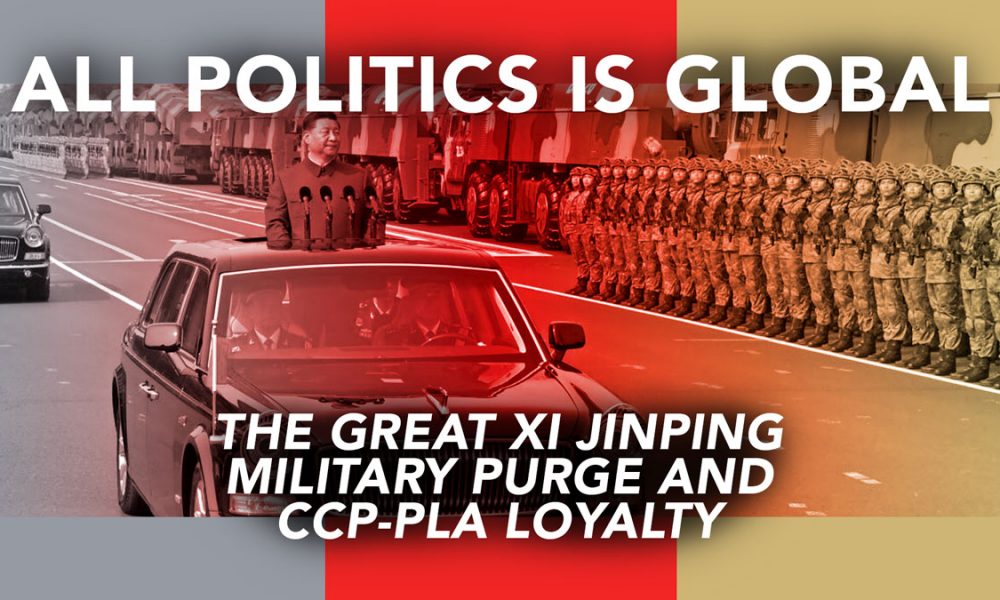
In conclusion, Xi Jinping’s military purge represents a significant turning point in Chinese history. The ramifications extend far beyond the military, impacting the country’s internal dynamics, international relations, and future trajectory. The ongoing effects of this purge will undoubtedly continue to shape the narrative of China’s development in the years to come.
Answers to Common Questions
What are the primary motivations behind Xi Jinping’s military purges?
Motivations behind the purges are multifaceted, including consolidation of power, eliminating perceived threats to Xi’s authority, addressing ideological differences, and managing economic pressures. Political ambition and power struggles are central to the dynamic.
How has the military’s effectiveness been affected by these purges?
The purges have potentially affected morale and efficiency, possibly leading to internal divisions and conflicts. The impact on military strategies and tactics is also a subject of ongoing debate. Changes in personnel and backgrounds could affect the military’s ability to project power.
What are the long-term implications of these purges for China’s international relations?
The purges have likely influenced China’s international relations, impacting regional stability and China’s global image. The responses from other countries and international organizations vary, with some concerns and scrutiny.
What are the possible future scenarios for the military under Xi Jinping’s leadership?
Potential future scenarios involve continued consolidation of power, potential challenges, and opportunities for the military. The future trajectory of the military’s role within the CCP remains a significant aspect.

